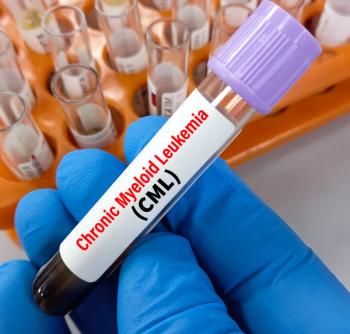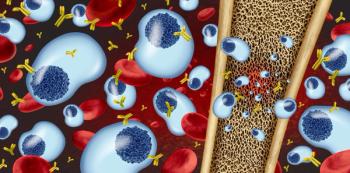
Pharmacy Practice in Focus: Health Systems
- March 2018
- Volume 7
- Issue 2
New Insulin Products and Best Practices
Even with many new developments over the past century, the coordinated use of blood glucose monitors, diabetes medications, and insulin to manage the disease may be too intricate for some patients.
More than 90 years ago, the first patient was treated with insulin, putting an end to the standard treatment of a severe calorie-restricted diet for patients with diabetes. This revolutionary treatment allowed patients with diabetes to live longer than ever.1 Since then, scientific innovation has made the disease more manageable through the creation of glucose monitors, insulin pens, and oral diabetes medications. An estimated 23.1 million individuals (7.2% of the US population) have been diagnosed with diabetes.2 The results of a 2012 survey that looked at the types of diabetes treatment used by adults in the United States showed that 6 million took insulin either alone or in combination with oral medication.3 The disease’s prevalence provides a major incentive for biotechnology and pharmaceutical companies to continue making products that improve the convenience of diabetes management.
Even with many new developments over the past century, the coordinated use of blood glucose monitors, diabetes medications, and insulin to manage the disease may be too intricate for some patients. Although some blood glucose monitors involve smartphone use, the major drawback remains finger sticking. Within the past few years, companies have begun developing devices that eliminate the need to obtain a blood sample for glucose monitoring.4 One example is a continuous glucose monitor (CGM), which measures glucose throughout the day. This new method of glucose monitoring can help patients better understand how their levels change, depending on the activity and time of day.5
The introduction of new insulin products and glucose monitors has helped many patients with diabetes adhere to their medications and optimize their therapy. With the widespread use of smartphones and smart watches, it is no surprise that disease state monitoring would use these technologies. Also, with insulin costs tripling from $231 to $736 per year per patient between 2002 and 2013, the race for cheaper biosimilar options is in high gear.6 It is the pharmacist’s responsibility to keep up with the ever-changing world of diabetes treatment options. By doing so, pharmacists can play a major role in teaching patients how to properly use new devices, counseling on new insulin options, and following up on treatments during subsequent visits to the pharmacy.
NEW PRODUCTS AND DEVICES (see table)
Admelog (insulin lispro injection)
- Approved in December 2017
- Sanofi
The FDA approved Admelog as the first short-acting “follow-on” of insulin lispro (Humalog, Eli Lilly). This product is indicated to improve blood sugar levels in adult patients with type 2 diabetes (T2D) and patients older than 3 years with type 1 diabetes (T1D).7
To date, the FDA has not designated Admelog a therapeutic equivalent or a bioequivalent to Humalog. However, in the January 2018 issue of Diabetes Technology & Therapeutics, the results of the SORELLA-2 study showed that Admelog showed similar efficacy, immunogenicity, and safety in patients with T2D who also used Lantus (insulin glargine) as basal insulin. The 6-month, controlled, multinational, open-label, randomized phase 3 study stratified patients into 2 treatment groups, either Admelog (n= 253) or Humalog (n = 252), plus once-daily Lantus. The study results showed that the change in glycated hemoglobin (HbA1c) from baseline to week 26 was similar in both treatment groups. Additionally, similar changes in the fasting plasma glucose, the number of treatment emergent adverse events, the percentage of patients developing anti-insulin antibodies, and the risk of hypoglycemic events were seen in both treatment groups. Because the study population was predominantly Caucasian patients, with small numbers of African American and Asian American patients, caution is advised when extrapolating the results to those populations.8 When Admelog becomes commercially available, it could be financially advantageous to many insulin-dependent patients with diabetes who take Humalog.
Dexcom G5 Mobile Continuous Glucose Monitoring System
- Approved December 20, 2016
- Dexcom
The FDA approved the use of the Dexcom G5 Mobile Continuous Glucose Monitoring System in the management of T1D and T2D in 2016. Dexcom G5 technology allows patients to receive glucose values every 5 minutes, for up to 7 days, through its continuous monitoring system. It is the first and only CGM available for US Android use.9 Indicated for people older than 2 years, the Dexcom G5 system uses compatible smart technology devices to give patients the ability to keep up-to-date with their glucose data.10
This system consists of the sensor, the transmitter, and a compatible smartphone device. The sensor is placed in either the abdomen for adults or the upper buttocks for those between 2 and 17 years. Before insertion of the sensor, patients must be counseled on the importance of cleaning the skin for sensor placement and ensuring that the area is free of irritation, scars, and tattoos. It is also critical to ensure that the sensor area will not be compressed or pushed in any way. Next, the transmitter is externally attached to the sensor pod and the smartphone device is then ready for pairing. For proper pairing, the user must perform 2 initial calibrations, with a 2-hour warm-up session. Additional calibrations, each requiring a finger stick, must be done every 12 hours.10
Fiasp (insulin aspart injection)
- Approved September 29, 2017
- Novo Nordisk
Fiasp is a fast-acting mealtime insulin that improves the glycemic control for patients with T1D or T2D. The formulation of Fiasp is identical to Novo Nordisk’s insulin aspart counterpart, NovoLog, but has additions of L-arginine (a formula-stabilizing amino acid) and niacinamide (vitamin B3). The additions of niacinamide allow for a faster initial absorption (about 2.5 minutes vs 5-15 minutes with NovoLog).11 With a faster absorption, it more closely mimics the natural physiologic insulin response.
Fiasp is given as a subcutaneous injection, either at the start of a meal or within 20 minutes after starting to eat. This gives the patient 2 chances to administer the dose, which may improve adherence. It can also be given as an intravenous (IV) infusion under medical supervision after dilution; however, it can only be used in infusion systems that use propylene infusion bags. As an IV infusion, Fiasp is stable at room temperature for 24 hours in normal saline or dextrose 5% water. Fiasp is also available in 3-mL prefilled pens (FlexTouch) and 10-mL multidose vials.
Like other insulins, patients on Fiasp require close monitoring of their blood glucose and dose adjustments when taking other medications that may increase hypoglycemic risk or blunt hypoglycemic signs and symptoms. Those on basal-bolus treatment or those who tend to forget their mealtime dose should check their blood glucose for possible insulin dose adjustments.12
A 26-week multicenter, treat-to-target, phase 3 clinical trial (ONSET 1) evaluated the efficacy and safety of Fiasp compared with conventional insulin aspart in adults with T1D. Subjects were randomized in a 1:1:1 ratio to conventional insulin aspart (n = 380), double-blind mealtime Fiasp (n = 381), or open-label postmeal Fiasp (n = 382). The study results demonstrated that those treated with Fiasp had statistically significantly reduced HbA1c (7.3% with mealtime; 7.5% with postmeal) compared with its baseline (8.0%) 26 weeks after treatment. Those who received Fiasp were more likely to reach the target HbA1c of <7.0% than those who received conventional insulin aspart. Additionally, Fiasp showed lower 1- and 2-hour postprandial plasma glucose compared with insulin aspart. Despite having a faster onset, Fiasp showed a similar number of hypoglycemic episodes and safety profiles as conventional insulin aspart.13
Fiasp has the same list price as NovoLog and is offered with a savings program for eligible patients with commercial insurance. Fiasp is also available for eligible patients through the Novo Nordisk Patient Assistance Program. Patients can get more information about the program by calling 866-310-7549.
FreeStyle Libre Flash Glucose Monitoring System
- Approved September 27, 2017
- ABBOTT Diabetes Care Inc
The FreeStyle Libre Flash Glucose Monitoring System is the first CGM that does not require a blood sample for calibration, as it comes factory calibrated. This takes away the burden of daily finger sticks needed for traditional glucometers. It is indicated for adult patients with T1D or T2D.14
Glucose levels are read when the dedicated mobile reader is waved over the flat sensor, which is worn posteriorly on the upper arm. The flat sensor allows for a more discreet profile and can easily be hidden under clothing. A small sensor wire is inserted below the skin’s surface and continuously monitors and measures glucose levels. The sensor is applied during the start-up period, which is 12 hours before its first use. The FreeStyle Libre is water resistant and can be worn for up to 10 days. Movement or sweat from intense exercise may loosen the sensor, so it should be removed and replaced when that occurs. Do not reuse sensors or sensor applicators, because they are designed for single use. Mild skin irritation may occur at the insertion site.
The sensor only displays a reading between 40 and 500 mg/dL. If readings are below or above that range, the system will display either “LO” or “HI,” in which case a manual finger stick is recommended. If an inaccurate reading is suspected for any reason or if symptoms do not match the readings, a finger stick test using a blood glucose meter should be conducted.15
InPen
- Received FDA 501(k) approved July 27, 2016
- Companion Medical
InPen is the first reusable insulin injector pen that uses a smartphone application to improve insulin adherence for patients older than 12 years. Connected via Bluetooth, the smartphone application can set dose reminders and track insulin injections. The system also sends alerts when the insulin’s temperature is out of range, ensuring insulin effectiveness and proper storage. The dose calculator computes mealtime and correction doses based on blood glucose, carbohydrate intake, and prior injections. Patient-specific information provided by a health care provider (eg, targeted blood glucose, insulin sensitivity parameters, and insulin-to-carbohydrate ratio) is required for the system to calculate the insulin dose. With the automatic dose reminders, capability of storing insulin therapy data for up to a year, and dose calculators, InPen has the potential to improve patient adherence and communication with the health care provider.
Only available with a prescription, InPen is compatible with Humalog and NovoLog U-100 3-mL insulin cartridges and single-use detachable and disposable pen needles. It is also compatible with Apple iOS 10 or greater supported devices. The Android version will be coming soon.16 The InPen system is not yet available in retail pharmacies. Instead, prescriptions must be sent to the company through its website.
BEST PRACTICES ​​​​​​​
The 2017 Institute for Safe Medication Practices Guidelines for Optimizing Safe Subcutaneous Insulin Use in Adults outline many prevalent issues in the management of patients with diabetes.17 The following are a few best practices to promote patient safety and improve health outcomes:
Educate patients about the types of insulin syringes, needles, and vials and their proper usage. Many insulin devices have become available over the past few decades, and many more are coming to market. Furthermore, many of these devices look similar but work differently. Without proper education, caregivers or patients can easily administer a dose incorrectly, administer the wrong dose, or have an accidental needle stick. The best way to ensure that patients understand how to properly use their delivery devices is to do a physical device demonstration. This provides an opportunity for patients to feel the device themselves and for the educator to correct any misuse before an error occurs.
Enforce proper communication during transitions of care. Due to the complexity of diabetes, patients may often find themselves moving between care settings based on their symptoms. Ensuring that each health care provider involved in the care of a patient with diabetes is continuously up-to-date on any insulin dose changes, nondiabetic medication changes, and overall health status is critical to provide care between inpatient and outpatient visits. Guaranteeing that patients leave each health care visit with an adequate amount of their medications and insulin delivery devices will also reduce the risk of hospitalizations and severe complications. Ultimately, each patient care team member should communicate effectively and openly to continuously advance patient care and address concerns as they arise.
Ensure that patients understand the disease’s signs and symptoms. Many patients are unaware of the signs and symptoms of high-risk complications of diabetes, such as diabetic ketoacidosis, hyperglycemia, hypoglycemia, kidney disease, major cardiovascular events, and neuropathy. Making time for repeated patient education on this matter at every visit may be important for preventing the escalation of these events. The American Diabetes Association has many handouts and resources that health care professionals can make available for the patient to take home.
Offer interdisciplinary education to maximize patient understanding of insulin meal calculation and glucose monitoring. Diabetes is a lifelong disease that requires a combination of a healthy lifestyle and pharmacologic interventions for optimal management. With the help of dietitians, nurses, and other health care professionals, pharmacists in inpatient and outpatient settings can help patients maximize the results from their insulin doses. This includes enforcing how critical it is to monitor glucose levels closely, helping patients practice calculating their mealtime doses, and understanding the impact of carbohydrates on their mealtime doses. With enforcement at every point of care, patients may be more likely to adhere to a diabetes-friendly diet and lower the risk of hyperglycemia or hypoglycemia.
The authors thank Rachel Eyler, PharmDa nephrology clinical pharmacist at Yale New Haven Hospital in Connecticut and an assistant clinical professor of pharmacy practice at the University of Connecticut in Storrs, and Kristina Shvets, PharmD, a PGY-2 internal medicine pharmacist at Yale New Haven Hospital in Connecticut, for comments that greatly improved this article.
Kristina Barakov, Bella Pangaribuan, and Belinda Sam are PharmD candidates at the University of Connecticut in Storrs
References
1. American Diabetes Association. 75th anniversary timeline. American Diabetes Association website. diabetes.org/about-us/75th-anniversary/timeline.html. Accessed January 27, 2018.
2. American Diabetes Association. Statistics about diabetes. American Diabetes Association website. diabetes.org/diabetes-basics/statistics/. Published July 19, 2017. Accessed January 28, 2018.
3. CDC. National diabetes statistics report, 2014. CDC website. cdc.gov/diabetes/pdfs/data/2014-report-estimates-of-diabetes-and-its-burden-in-the-united-states. pdf. Accessed January 27, 2018.
4. Ramchandani N, Heptulla RA. New technologies for diabetes: review of the present and the future. Int J Pediatr Endocrinol. 2012;2012(1):28. doi: 10.1186/1687-9856-2012-28.
5. National Institute of Diabetes and Digestive and Kidney Diseases. Continuous glucose monitoring. National Institute of Diabetes and Digestive and Kidney Diseases website. niddk.nih.gov/health-information/diabetes/overview/managing-diabetes/continuous-glucose-monitoring. Published June 2017. Accessed January 28, 2018.
6. Silverman E. What’s behind skyrocketing insulin prices? PBS website. pbs.org/ newshour/health/whats-behind-skyrocketing-insulin-prices. Published April 5, 2016. Accessed January 28, 2018.
7. FDA approves Admelog, the first short-acting “follow-on” insulin product to treat diabetes [news release]. Silver Spring, MD: FDA; December 11, 2017. www.fda.gov/NewsEvents/Newsroom/PressAnnouncements/ucm588466.htm. Accessed January 27, 2018.
8. Derwahl KM, Bailey TS, Wernicke-Panten K, Ping L, Pierre S. Efficacy and safety of biosimilar SAR342434 insulin lispro in adults with type 2 diabetes, also using insulin glargine: SORELLA 2 Study. Diabetes Technol Ther. 2018;20(1):49-58. doi: 10.1089/dia.2017.0281.
9. Dexcom G5 Continuous Glucose Monitor. Dexcom website. dexcom.com. Accessed January 17, 2018.
10. Dexcom. G5 Mobile Continuous Glucose Monitoring System user guide. Amazon web services website. s3-us-west-2.amazonaws.com/dexcompdf/ LBL013990-REV003-G5-Mobile-User-Guide-NA-Android-US.pdf. Accessed January 17, 2018.
11. Novo Nordisk receives FDA approval for Fiasp, a new fast-acting mealtime insulin [news release]. Plainsboro, NJ: Novo Nordisk; September 29, 2017. press. novonordisk-us.com/2017-09-29-Novo-Nordisk-Receives-FDA-Approval-for-Fiasp-R-a-New-Fast-Acting-Mealtime-Insulin. Accessed January 10, 2018.
12. Fiasp (insulin aspart injection) [prescribing information]. Bagsvaerd, Denmark: Novo Nordisk A/S; 2017.
13. Russell-Jones D, Bode BW, De Block C, et al. Fast-acting insulin aspart improves glycemic control in basal-bolus treatment for type 1 diabetes: results of a 26-week multicenter, active-controlled, treat-to-target, randomized, parallel-group trial (onset 1). Diabetes Care. 2017;40(7):943-950. doi:10.2337/dc16-1771.
14. FDA approves first continuous glucose monitoring system for adults not requiring blood sample calibration [news release]. Silver Spring, MD: FDA; September 27, 2017. www.fda.gov/NewsEvents/Newsroom/PressAnnouncements/ ucm577890.htm. Accessed January 17, 2018.
15. Abbott Laboratories. FreeStyle Libre Flash Glucose Monitoring System. Abbott Laboratories website. myfreestyle.com/provider/. Accessed January 17, 2018.
16. Companion Medical. Smart insulin delivery InPen. Companion Medical website. companionmedical.com/. Accessed January 8, 2018.
17. Institute for Safe Medication Practices. 2017 ISMP guidelines for optimizing safe subcutaneous insulin use in adults. Institute for Safe Medication Practices website. ismp.org/tools/guidelines/Insulin-Guideline.pdf. Accessed January 28, 2018.
Articles in this issue
over 7 years ago
Neuropathic Pain: A Glimpse Inside the Unabating Afflictionover 7 years ago
Overview of Oral Anticoagulation Agentsover 7 years ago
340B Vendor Selectionover 7 years ago
Prostate Cancer: Facts, Causes, and Treatmentsover 7 years ago
Giving Credit Where Credit Is DueNewsletter
Stay informed on drug updates, treatment guidelines, and pharmacy practice trends—subscribe to Pharmacy Times for weekly clinical insights.























































































































































































































